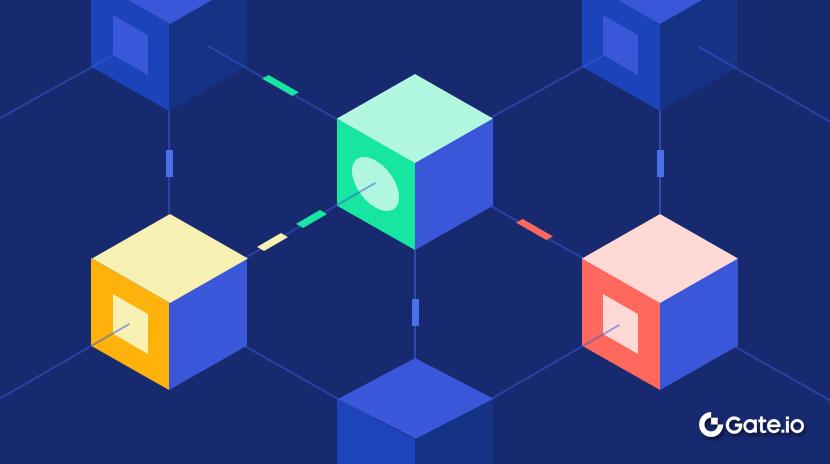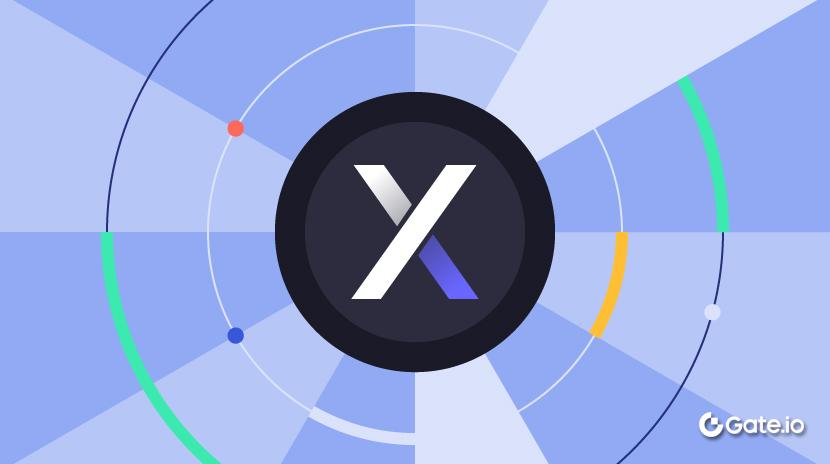من أين يأتي DeSci وإلى أين يتجه
مقدمة
تصبح العلوم اللامركزية (DeSci) موضوعًا ساخنًا في المجتمع العلمي العالمي. لقد كانت النماذج التقليدية للبحث مقيدة منذ فترة طويلة بقضايا مثل توزيع التمويل غير المتساوي، وكتل البيانات، وحواجز النشر، مما يؤدي إلى بطء تقدم البحث وتقليل حوافز الابتكار. تهدف العلوم اللامركزية، من خلال تقنيات مثل سلسلة الكتل، العقود الذكية، والمنظمات المتمتعة بالحكم الذاتي اللامركزي (DAOs)، إلى إعادة تشكيل النظام البحثي لجعله أكثر انفتاحًا، وكفاءة، وعادلية.

في السنوات الأخيرة، حققت ديسي تقدمًا كبيرًا في مجالات مثل الصناعات الدوائية والذكاء الاصطناعي ومنصات البيانات مفتوحة المصدر. على سبيل المثال، يستخدم مستشار موليكول نموذج الرمز الأصلي غير القابل للاستبدال (Intellectual Property Non-Fungible Token) ، مما يتيح للباحثين جمع الأموال مباشرة من المستثمرين العالميين، مكسرًا حواجز العمليات التقليدية لتمويل الأبحاث.
ومع ذلك، تواجه ديساي لا تزال تحديات عديدة، مثل حماية البيانات الخاصة، وحقوق الملكية الفكرية، والامتثال التنظيمي، وجدوى الحكم اللامركزي. ومع ذلك، فإن التحول النمطي الذي جلبته ديساي يحظى بدعم متزايد، خاصة في مجالات البحث التي تكافح النماذج التقليدية لتغطيتها.
سيستكشف هذا المقال مفاهيم DeSci الأساسية والتقنيات الأساسية وحالات التطبيق والتحديات واتجاهات التطوير المستقبلية لمساعدة القراء على فهم تماما الآفاق لهذا المجال الناشئ.
أصل ديسي
مشاكل النظام البحثي التقليدي
توزيع التمويل غير المتوازن
المؤسسات النخبوية والمنح الحكومية ورؤوس الأموال الخاصة استولت منذ فترة طويلة على توزيع التمويل في نظام البحث التقليدي. وفقًا لتقرير من معهد الصحة الوطني الأمريكي (NIH)، يقضي العلماء 80٪ من وقتهم في البحث في طلبات الحصول على منح، ومع ذلك، معدل نجاحهم أقل من 20٪. هذا العتب المرتفع للحصول على التمويل يعني أنه يتلقى دعمًا ماليًا فقط عدد قليل من الجامعات الرائدة، بينما يتم تهميش المختبرات الصغيرة المبتكرة والباحثين الناشئين.

المصدر: pharmafeatures
في الوقت نفسه، تتحكم شركات الأدوية الكبيرة في تدفقات التمويل، مما يؤدي إلى فجوة تمويل بنسبة 70٪ لأبحاث الأمراض النادرة. هذا التوزيع الغير عادل للأموال يكبح التنوع في نظام البحث ويؤثر بشكل كبير على الابتكار.
البيانات الخاصة والاحتكارات الأكاديمية
يتم إدارة بيانات البحوث والنتائج في النظام التقليدي في بيئات مغلقة، مع وجود احتكارات خاصة في نشر الأبحاث الأكاديمية. تفرض المجلات الرائدة مثل Nature و The Lancet أكثر من 11,000 دولار للمقال الواحد، مما يجعل العديد من النتائج البحثية المتميزة غير متاحة للباحثين العالميين.
بالإضافة إلى ذلك، غالبًا ما يتحكم هذه المجلات من قبل عدد قليل من شركات النشر، مما يزيد من تفاقم عدم المساواة في نشر الموارد الأكاديمية.
آليات التحفيز غير المتناسقة
في النظام التقليدي للبحث، غالبًا ما يتعرض الباحثون لضغوط لمتابعة النشرات ذات التأثير العالي بدلاً من التركيز على القيمة الابتكارية طويلة الأمد. تشدد أنظمة التقييم الأكاديمي عادةً على "مؤشر h" (مقياس مجمع لعدد النشرات والاستشهادات).

المصدر: ويكي
يؤدي هذا إلى تركيز الباحثين على الأهداف ذات المدى القصير متجاهلين البحث الأساسي والاستكشاف. يضع هذه الظاهرة، المعروفة باسم "انشر أو اندثر"، ضعف في عمق واستمرارية البحث، مما يترك العديد من المشاريع المبتكرة بدون الدعم الكافي.
@# المسار الكبير لتكنولوجيا البلوكشين
التخزين اللامركزي وملكية البيانات
تقنية البلوكشين تقدم حلولا للتخزين الدائم والتحقق من ملكية البيانات. التخزين الدائم لـ Arweave يضمن أن البيانات التجريبية غير قابلة للتغيير، بينما يمكن لـ IPFS تمكين المشاركة الموزعة. هذا يعني أن الباحثين يمكنهم رفع بياناتهم إلى منصات التخزين اللامركزية، مما يضمن الشفافية والانفتاح.

المصدر: linktree
وبالإضافة إلى ذلك، يستخدم GenomesDAO تقنية إثبات الحد الأدنى للمعرفة (ZKP) لحماية خصوصية البيانات الجينية، مما يتيح للمستخدمين التحكم في وصول البيانات من خلال الرموز. وهذا لا يضمن الخصوصية للبيانات فحسب بل يوفر حوافز لمساهمي البيانات أيضًا.
الحوكمة اللامركزية والعقود الذكية
يستخدم ديسكاي DAOs (المنظمات المستقلة اللامركزية) والعقود الذكية لتحقيق تخصيص شفاف وإدارة الأموال البحثية.

المصدر: رسمي
على سبيل المثال ، VitaDAO هو DAO يركز على طول العمر وتمويل البحوث الطبية الحيوية. إنه يجمع موارد وأموال البحث العالمية من خلال الحوكمة على السلسلة ، وترميز عملية صنع القرار لأفراد المجتمع ، ويضمن شفافية بيانات البحث وإمكانية تتبعها من خلال تقنية blockchain. هذا يكسر قيود تخصيص تمويل البحوث التقليدية ، ويسرع من تطوير علوم طول العمر. خصصت VitaDAO 4.1 مليون دولار لدعم أبحاث مكافحة الشيخوخة من خلال التصويت على السلسلة ، بينما قامت MoleculeDAO بترميز براءات اختراع الأدوية على أنها IP-NFTs ، مما يسمح للمستثمرين بالمشاركة في أرباح التسويق. تعمل أتمتة العقود الذكية على تقليل تكاليف الإدارة وتحسين كفاءة التمويل.
اقتصاد الرمزية المشتركة

المصدر: رسمي
يهدف هذا المشروع إلى كسر حواجز تبادل الأكاديميات التقليدية من خلال تكنولوجيا بلوكشين وحوافز العملات المشفرة، مما يتيح للباحثين مشاركة وتقييم وتحسين نتائج البحث دون وسطاء. يستخدم حوافز الرموز لجذب العلماء العالميين للمساهمة في محتوى أكاديمي عالي الجودة، مما يسرع من انتشار وابتكار المعرفة العلمية. تكافؤ ResearchHub المساهمين بالرموز RSC، مما يوفر تقاسم الأرباح لمراجعة الأقران.
لا تقود هذه الرموز فقط مشاركة المجتمع ولكنها تعزز أيضًا سيولة وشفافية صناديق البحث.
الأحداث الرئيسية في تطور ديساي
- 2021: تم بيع أول NFT علمي مقابل 13 ETH، مما يشكل الظهور العملي لمفهوم DeSci.
- 2024: استثمرت Pfizer استراتيجيا في VitaDAO، مما يشكل المرة الأولى التي احتضن فيها عملاق صناعة الأدوية التقليدية DeSci.
- 2025: استثمرت Binance Labs في BIOProtocol، مما دفع بارتفاع يصل إلى 264٪ يوميًا في قيمة سوق عملة DeSci.
الهندسة المعمارية التقنية والنماذج الاقتصادية
أربعة أركان تكنولوجيا بلوكشين
آلية التوافق: يعتمد ديسي آليات توافق سلسلة الكتل الأكثر شيوعًا، وهي إثبات الحصة (PoS) على سبيل المثال، يمكن لحاملو رموز فيتاداو التصويت على مقترحات التمويل، مما يضمن توزيع الأموال بشكل عادل وشفاف. تقوم هذه الآلية للتوافق بإزالة الحواجز البيروقراطية التقليدية، مما يجعل عملية اتخاذ القرارات أكثر ديمقراطية.
التخزين الموزع: يتيح التخزين اللامركزي الحفاظ على البيانات البحثية لفترة طويلة ومشاركتها. أرويف وIPFS هما حلول معتمدة على نطاق واسع.

المصدر: رأس المال
تضمن أرويف التخزين الدائم للبيانات، مما يقلل من مخاطر فقدان البيانات، بينما يدعم IPFS تخزين الشبكة الموزع، مما يمنع الفشل نقطة واحدة. هذا يجعل بيانات ديسكي أكثر أمانًا وقابلية للوصول.
العقود الذكية: تقوم عقود DeSci الذكية بتلقين توزيع الأموال والإشراف على التجارب وتوثيق نتائج البحث. يتم تنفيذ هذه العقود استناداً إلى قواعد محددة مسبقاً، مما يقلل من التدخل اليدوي ويحسن الكفاءة.

المصدر: رسمي
على سبيل المثال، يستخدم ValleyDAO العقود الذكية لإدارة مشاريع الأحياء الاصطناعية، ويطلق الأموال وفقًا لنقاط تحقيق المشروع لمنع الاستخدام السيئ.
الخوارزميات التشفيرية: تحمي الخوارزميات التشفيرية خصوصية البيانات. يستخدم GenomesDAO، على سبيل المثال، تقنية البرهان بدون معرفة (ZKP) لحماية البيانات الجينية، مما يتيح مشاركة البيانات دون المساس بالخصوصية. وهذا يشجع البحث التعاوني دون تعريض المعلومات الحساسة.
ابتكار اقتصاد الرمزية
تدور اقتصاد عملة DeSci حول رموز الحوكمة ورموز الأداء ورموز الميم، حيث يساهم كل منها في تمويل السيولة والمشاركة المجتمعية.
رموز الحوكمة
توفر رموز حوكمة DeSci حقوق التصويت للمشاركين، مما يضمن أن جميع أصحاب المصلحة لديهم كلمة حاسمة في قرارات تمويل البحث. على سبيل المثال، تمكن رموز VITA التابعة لـ VitaDAO حائزي الأصول من التصويت على مقترحات التمويل، مما يضمن توزيع الأموال بشكل عادل وشفاف. يشجع هذا النموذج الحوكمي على مشاركة واسعة من المجتمع، مما يكسر احتكار توزيع التمويل في المجالات البحثية التقليدية.
الرموز الأدائية
تلعب الرموز الخاصة بالأدوات دوراً حاسماً في ديساي من خلال تحفيز مساهمي البحث ومنح أذونات الوصول إلى البيانات.

المصدر: رسمي
على سبيل المثال، تعمل رموز LAKE في DataLakeChain كأوراق اعتماد الوصول، مما يتيح للباحثين تفويض الوصول إلى البيانات مع ضمان الخصوصية وتعزيز دورة البيانات.
رموز الميمات
على الرغم من غير تقليدي ، فقد ثبت أن العملات المميزة فعالة بشكل مدهش في اقتصاد ديسكي. من خلال استغلال الضجة التي تدفعها المجتمع والتسويق الفيروسي ، يمكن للعملات المميزة جذب الانتباه والتمويل بسرعة للمشاريع في مرحلة مبكرة. تشمل الأمثلة على ذلك عملات RIF و URO ، التي تم إنشاؤها لجمع الأموال من أجل مبادرات البحث في مجال الطول الزمني. بينما تحمل العملات المميزة غالبًا مخاطر مضاربة ، فإنها تعد أداة قوية لتوليد السيولة على المدى القصير وزيادة الوعي العام. يحذر المحللون من أن المشاريع يجب أن تجد توازنًا بين المضاربة على المدى القصير والقيمة العلمية على المدى الطويل لتجنب تكرار الأخطاء التي شهدتها فقاعات العملات الرقمية في الماضي.
المناظر الطبيعية السوقية ودراسات الحالة
المناظر البيئية التنافسية للمشاريع الرائدة
وفقًا لبيانات CoinGecko لعام 2025، تتصدر أعلى ثلاثة مشاريع في قطاع DeSci من حيث رأس المال السوقي:

المصدر: رسمي
هيبوكرات (HPO، 109 مليون دولار): متخصصة في الاستشارات الطبية القائمة على الذكاء الاصطناعي، تتم تدريب خوارزميات هيبوكرات على البيانات على السلسلة السلسلة، مما يحقق دقة أعلى من الأدوات التشخيصية التقليدية. يهدف المشروع إلى تقديم نصائح طبية شخصية عالمياً.

المصدر: الموقع الرسمي
فيتاداو (فيتا، 68.75 مليون دولار): رائد في البحوث حول طول العمر، فيتاداو يمول مشاريع متعلقة بتمديد التيلومير وعلاجات تصفية الخلايا الشيخوخية. كمشروع ديسي الرائد، لقد جذب مستثمري البيوتك التقليدية ونجح في تسريع تمويل البحوث حول طول العمر ودمج الموارد بنجاح.

المصدر: الموقع الرسمي
ResearchCoin (RSC، 45.6 مليون دولار): المعروف باسم 'GitHub of Science'، يحفز ResearchCoin التعاون مفتوح المصدر من خلال مكافآت الرموز. تعزز المنصة التعاون العلمي وتصبح مركزًا رئيسيًا للنشر الأكاديمي اللامركزي.
التكامل مع المؤسسات التقليدية
يكتسب DeSci قبولًا بين مشاريع سلسلة الكتل الناشئة ويثير اهتمامًا متزايدًا من المؤسسات التقليدية.

المصدر: رويترز
تشارك الأطراف العلمية التقليدية مثل بفايزر ومعهد ماساتشوستس للتكنولوجيا (MIT) في مشروع DeSci من خلال الاستثمار والتعاون، على أمل استخدام تكنولوجيا البلوكتشين لتحسين كفاءة البحث والتطوير وتعزيز تجارة الأدوية الابتكارية.
شركة فايزر: العملاق الصيدلاني استثمر في فيتاداو لتسريع تطوير العقاقير المضادة للشيخوخة. وقال رئيس فايزر العالمي للبحث والتطوير: "النموذج اللامركزي يتجاوز العمليات التقليدية لرأس المال المخاطر، مما يتيح الوصول المباشر إلى التقنيات الحديثة." ساهمت مشاركة فايزر بتمويل قيم ونفوذ في الصناعة، مما دعم نمو فيتاداو.

المصدر: الموقع الرسمي
جامعة ماساتشوستس للتكنولوجيا (MIT): شراكة MIT مع MoleculeDAO لتشفير نتائج المختبر، مما يجذب تمويل المجتمع لدعم البحوث الترجمية. تعكس هذه الشراكة اعترافًا متزايدًا بـ DeSci بين المؤسسات الأكاديمية المرموقة، مما يشير إلى احتمال التحول نحو تضمين نماذج البحث اللامركزية.
المخاطر والجدل
على الرغم من التقدم السريع، تواجه ديسكي تحديات كبيرة وجدلية:
تقلب السوق: في بداية عام 2025، شهدت توكنات ديساي انخفاضًا بنسبة 90٪، مكشفة عن فقاعات مضاربات. أبرز الانخفاض الحاد اعتماد الصناعة بشكل كبير على تمويل مدفوع بالتضخيم، محثًّا كل من المستثمرين وقادة المشاريع على التركيز على القيمة على المدى الطويل.

المصدر: ESG
التحديات التنظيمية: لم توضح هيئة الأوراق المالية والبورصات الأمريكية (SEC) بعد ما إذا كانت الملكية الفكرية المرمزة تعتبر أوراقا مالية، مما يؤدي إلى قيود على جمع التبرعات لبعض DAOs. العثور على توازن بين اللامركزية والامتثال القانوني يبقى تحديا حرجا للقطاع.

مصدر: CSO
تتعارض الخصوصية الخاصة بالبيانات: لائحة الاتحاد الأوروبي العامة لحماية البيانات (GDPR) تفرض تعميد البيانات، مما يتعارض مع شفافية سلسلة الكتل. سيكون حل التوتر بين حماية الخصوصية وشفافية البيانات أمرًا حاسمًا لنمو DeSci المستدام.
توقعات المستقبل
تكامل الذكاء الاصطناعي والحوسبة الكمومية
مع التقدم السريع لتقنيات الذكاء الاصطناعي والحوسبة الكمومية، يستعد ديسي لموجة جديدة من التحول. هذه التقنيات لا تعزز فقط كفاءة البحث ولكنها توفر أيضًا أمانًا وقوة حسابية للبحث اللامركزي، مما يسرع من اندفاعات التطوير الدوائي وتوقع الأمراض، والتعاون العلمي التخصصي.
أظهرت الذكاء الاصطناعي إمكانات هائلة في اكتشاف الأدوية والهندسة الوراثية وتحليل البيانات. على سبيل المثال:
اكتشاف الأدوية: تحليل نماذج التعلم العميق المدفوعة بالذكاء الاصطناعي لمجموعات بيانات جزيئية ضخمة لتحديد مرشحي الأدوية المحتملين وتحسين الهياكل الجزيئية، مما يقلل من تكاليف المحاكمة والخطأ. تشير التقديرات إلى أن الذكاء الاصطناعي يمكن أن يقلل من دورات تطوير الأدوية بنسبة تزيد عن 40%، مما يقلل بشكل كبير من نفقات البحث والتطوير.

المصدر: رسمي
نموذج AlphaFold من DeepMind لشركة Google نجح في فك تشفير العديد من الهياكل البروتينية، مما أدى إلى تقدم ثوري في البحوث البيوفارماكولوجية.

المصدر: الموقع الرسمي
تجمع منصات تخزين البيانات اللامركزية مثل بروتوكول أوشن الذكاء الاصطناعي لتحسين الوصول والمشاركة في البيانات عبر المؤسسات، مما يعزز التعاون في البحوث المتعددة الأطراف.
تأثير الحوسبة الكمية:
تتحدى الحوسبة الكمية الأمان التشفيري التقليدي، خاصة بالنسبة إلى خوارزميات RSA و ECDSA، التي تعتمد عليها العديد من منصات البحث اللامركزية. تقوم مشاريع DeSci باستكشاف التشفير ما بعد الكم (PQC) لحماية بيانات البحث والعقود الذكية. على سبيل المثال:

المصدر: رسمي
تطبيقات التشفير ما باعد الكم: قدمت المعهد الوطني الأمريكي للمعايير والتكنولوجيا (NIST) تقدمًا في مجال توحيد معايير التشفير ما بعد الكم، واختار خوارزميات CRYSTALS-Kyber وCRYSTALS-Dilithium كأبرز الخوارزميات المقاومة للكم. تقوم مشاريع DeSci بدمج هذه الخوارزميات لبناء أنظمة تخزين ونقل البيانات البحثية الآمنة من الناحية الكمومية.

المصدر: تيك ستارت أبس
تتوقع محللو DWFLabs أنه بحلول عام 2025، ستعتمد منصات البحث المركزية بشكل واسع بروتوكولات تشفيرية آمنة من الكم. تقوم مشاريع مثل Polkadot و Filecoin بالفعل باستكشاف أطر مقاومة للكم لضمان أمان البيانات على المدى الطويل.
التبني الرئيسي والتوازن التنظيمي
لتحقيق اعتماد ديسي الرئيسي ، يجب عليها التغلب على العقبات التقنية وتوجيه الرقابة العالمية لضمان النمو المستدام.
استهداف المجالات النيش
تتطور مجالات البحث النيشية معينة، مثل دراسات الأمراض النادرة وأبحاث الطول العمري، كمحركات رئيسية للاعتماد. غالبًا ما تقوم الأنظمة التقليدية للبحث بتوفير تمويل غير كافٍ لهذه المجالات، ولكن تجذب مجموعات التمويل اللامركزية وحكم DAO الخاصة بـ DeSci المزيد من الموارد والباحثين.
دعم التمويل العام

المصدر: ذا جارديان
بدأت المؤسسات العامة مثل منظمة الصحة العالمية (WHO) في التعرف على إمكانات DeSci. وتوصي منظمة الصحة العالمية بأن تستكشف البلدان نماذج تجمع بين مبادرة DeSci والتمويل العام لدعم مبادرات البحوث اللامركزية، ولا سيما في مجال الصحة العمومية العالمية والبحوث البيئية.
التعاون الحكومي
يمكن أن توفر شراكات بين الحكومات ومنظمات البحوث اللامركزية لـ DeSci تمويلًا أكثر استقرارًا، مما يضمن أن نتائج البحث تعود بالفائدة على البشرية بدلاً من أن تكون تحت سيطرة مصالح رأس المال فقط.
التعاون عبر الحدود والشبكات العالمية
لا تقتصر ديسكاي على البلدان أو المناطق الفردية - بل إنها تتطور إلى شبكة بحث عالمية. تستفيد التجارب السريرية عبر الحدود والدراسات متعددة المراكز من منصات اللامركزية لتبسيط مشاركة البيانات وإدارتها، مما يعزز الكفاءة والشفافية.
علاوة على ذلك، تحمل ديساي الإمكانية لتصبح مكاملة بحثية عالمية، تربط مؤسسات البحث، والمؤسسات الأساسية، والمعامل، والمطورين في جميع أنحاء العالم لتسريع التقدم العلمي بشكل جماعي.
التحديات السياسية والتنظيمية
بينما يبدو مفهوم DeSci واعدًا، إلا أن البحث العلمي يظل عملية طويلة الأمد وتكلفتها مرتفعة، بعيدة عن ما يمكن أن تدعمه انفجارات تمويل قصيرة الأمد. يتطلب البحث دعمًا ماليًا مستمرًا، في حين أن طبيعة الصناعة العملة الرقمية التي تعتمد بشكل أساسي على التكهنات غالبًا ما تعطي الأولوية للمكاسب القصيرة الأمد على الاستقرار طويل الأمد.
في الوقت الحالي ، يفتقر العلم اللامركزي إلى نموذج تمويل مستقر. تعتمد العديد من مشاريع DeSci على تمويل العملات المشفرة ، والتي تكافح لمطابقة الموارد العميقة المتاحة لأنظمة البحث التقليدية ، مثل التمويل الحكومي والعسكري والمؤسسي الكبير.
على الرغم من أن ديسكاي تدعم اللامركزية نظريًا، إلا أن المشاريع التي لا تحظى بدعم مالي طويل الأجل قد تفشل في تحقيق اختراقات معنوية وتعود في النهاية إلى المؤسسات التقليدية التي تمتلك الموارد الأساسية.
استنتاج
بشكل عام، لا يهدف DeSci إلى الإطاحة بأنظمة البحث العلمي التقليدية تمامًا بل يهدف بدلاً من ذلك إلى خدمة نظام موازي لملء الثغرات في النظام البيئي الحالي. على الرغم من مواجهة فقاعات مضاربية وعقبات تكنولوجية، فإن اندفاعاته في تحقيق التمويل الديمقراطي، وتعزيز الشفافية في البيانات، وتعزيز التعاون العالمي هي لا رجعة فيها.
في المستقبل، مع دمج وكلاء الذكاء الاصطناعي وتكنولوجيا الكم، قد تتطور ديسكي إلى المحرك الأساسي لـ 'العلم 2.0'، مدفوعة البشرية من 'الامتيازات براءات الاختراع' إلى عصر جديد من 'مشاركة المعرفة'.
تقوم ديساي بخلق تحولات غير مسبوقة لصناعة البحث من خلال استغلال تقنية سلسلة الكتل والنماذج المركزة على العملات المشفرة. من خلال تخزين البيانات المركزية، وحاكمية داو، وحوافز الرموز، تقدم ديساي حلولًا لتوزيع تمويل البحث بشفافية وتعزيز مشاركة الموارد العلمية العالمية والتعاون. على الرغم من التحديات التنظيمية والتكنولوجية، سيستمر دور ديساي في النمو مع نضوج تقنية سلسلة الكتل.
المقالات ذات الصلة

ما هو Tronscan وكيف يمكنك استخدامه في عام 2025؟

كل ما تريد معرفته عن Blockchain

أفضل 10 شركات لتعدين البيتكوين

ما هي كوساما؟ كل ما تريد معرفته عن KSM

ما هو كوتي؟ كل ما تحتاج إلى معرفته عن COTI


